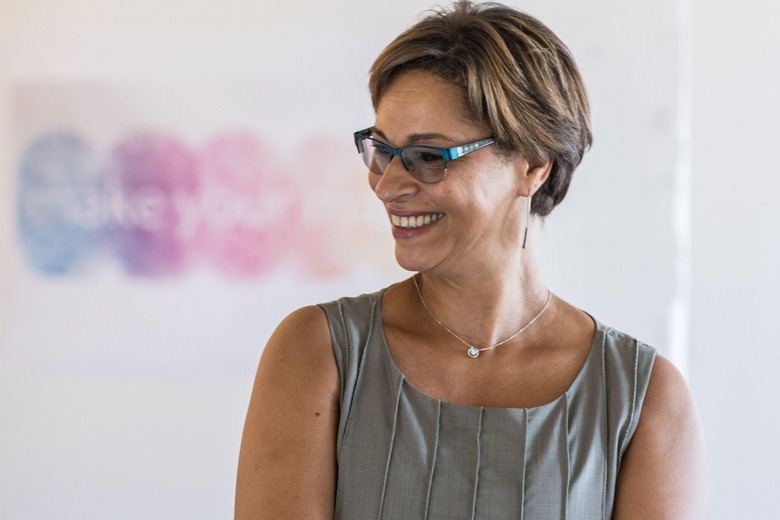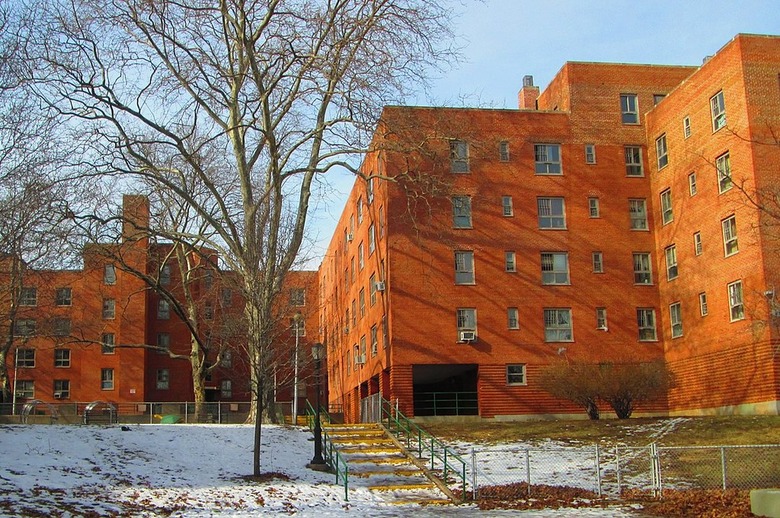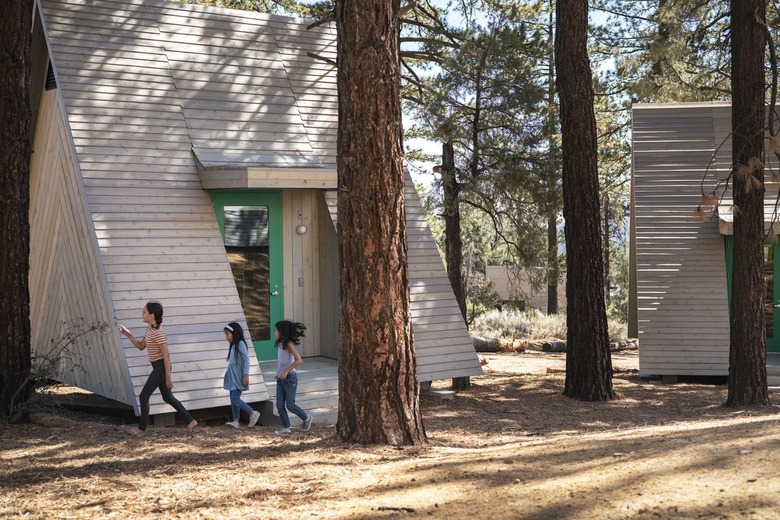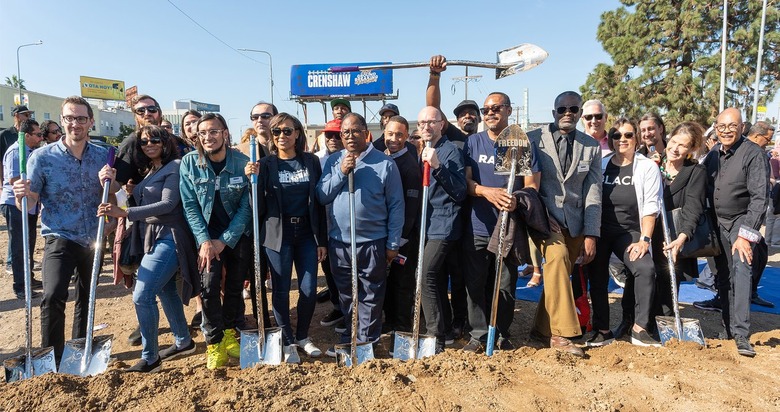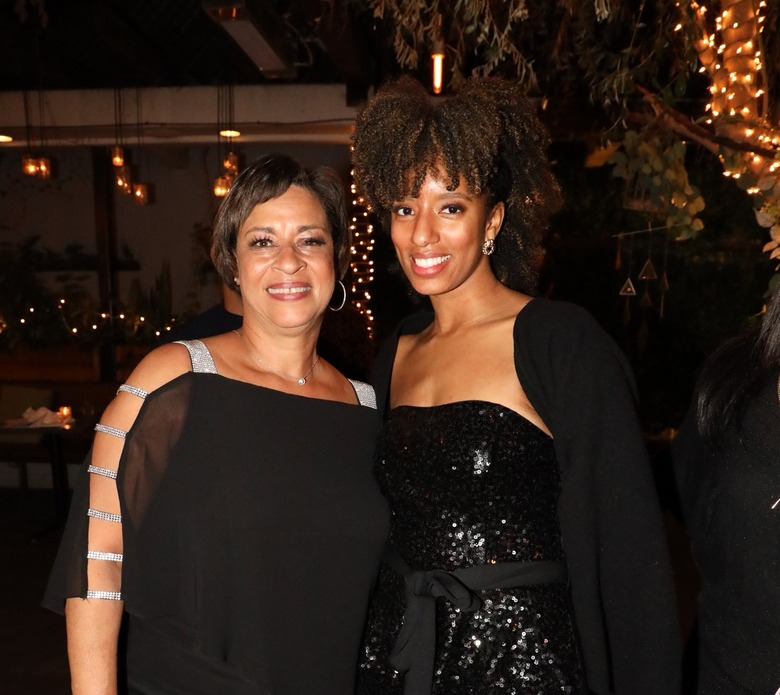Gabrielle Bullock On Building Ladders For Future Black Women Architects
There are over 121,000 licensed architects in the United States, according to a 2021 report by the National Council of Architectural Registration Boards. Black women make up only 539 of those architects, according to the Directory of African American Architects, which is less than 1%.
Yet, at the age of 12, with even fewer Black women architects as role models at the time, Gabrielle Bullock knew she wanted to pursue architecture. Born in Harlem and raised in the Bronx, Bullock had friends who lived in New York's public housing projects, where she was both appalled and motivated to explore how design can impact people's quality of life.
"I had a visceral reaction to the public housing projects," Bullock tells Hunker. "There was little landscaping, and they were fenced in. The walls were cinderblock, every unit was the same, and the maintenance of it was awful."
Image description: The Harlem River Houses, a New York City Housing Authority public housing complex, which were created to provide quality housing for working-class Black Americans. Credit: Wikimedia Commons
Bullock's own apartment was in a neighborhood peppered with lawns and playgrounds, which left her feeling guilty. She could safely go outside to play while some of her friends didn't have the same privilege. Seeing the poorly maintained housing projects as a child was Bullock's "aha" moment, leading her to discern the relationship between design and disparity. She connected the dots that housing design, like many things in America, is often influenced by factors like race and class.
"In my mind, the only way to design is to meet people where they're at, have representation on the design team, and have cities redefine the quality level that they'll accept from a design perspective."
Today, Bullock is considered a trailblazer in the architecture industry. She was the second Black woman to graduate from the Rhode Island School of Design (RISD), and for the past 30 years, she's worked at Los Angeles-based architecture firm Perkins&Will. She's the first Black managing director at the firm and also serves as the firm's director of global diversity, a position that allows Bullock to address and improve the firm's gender and racial equity. Her role has given her the opportunity to speak on panels that champion diversity, mentor budding architects, and push for more inclusive recruiting. In 2020, Bullock was awarded the Whitney M. Young Award for her ongoing work in addressing equity in architecture through initiatives like establishing scholarships for students of color through the Perkins&Will firm.
But before the titles and accolades, Bullock was just a girl from the Bronx who wanted to design better housing for people who looked like her. Bullock was the first in her family to attend college and the transition wasn't easy. Growing up in a diverse city like New York, Bullock says she experienced culture shock when she moved to Rhode Island for college.
"I didn't see my lived experience or my culture represented in the environment, the curriculum, or represented by the professors. I felt like the urban environment for people of color was not part of the design curriculum," the architect explains.
While Bullock might have been discouraged, she wasn't deterred. Though personally challenging, her time at RISD exposed her to a broad range of international architects and taught her how to understand and use architectural language, which seemed completely foreign at first. Her thesis was on housing in Harlem, and after graduation, she set out to explore how to design public housing in a more humanitarian way.
Bullock's childhood reaction to public housing served as the foundation of her architectural philosophy. In the case of housing projects and other urban communities, Bullock says architects often give little thought to what people want or need, or what kind of housing would give them a better quality of life.
"In my mind, the only way to design is to meet people where they're at, have representation on the design team, and have cities redefine the quality level that they'll accept from a design perspective. It's not just 'Oh, we have to give them housing, so just give them whatever we can.' It has an impact on society — with [poorly designed housing], there's no sense of ownership or pride in where you live, and without that, in my opinion, it will fail."
Image description: Girl Scout Camp Lakota. Credit: HANA Here And Now Agency
Bullock has been the driving force behind both domestic and international projects, leading the design of the Ronald Reagan UCLA Medical Center in Los Angeles, A-frame cabins for Camp Lakota (a campsite for the Girl Scouts of Greater L.A.), and Saudi Arabia's King Saud bin Abdulaziz University of Health Sciences. Bullock's recent work can be found at Destination Crenshaw, an art and cultural experience that was built with the input of Crenshaw's Black community. It is set to open Fall 2022.
"Destination Crenshaw is all outdoors, and it has a series of pocket parks [small public parks] with major public art commissions. We gave the community design agency, meaning they were part of the design team. We are telling their stories as they told us. We as architects and designers did not go in and say, 'Okay, this is what you're going to get; this is what you need,' which is historically what architects do. We did the complete opposite, and in many ways, we challenged the status quo. If the community is not engaged and proud or feels like part of the design, then it will not be theirs. And it needs to be theirs because they're going to be the caretakers. They're truly design partners with us."
Image description: Breaking ground at Destination Crenshaw. Credit: Courtesy of Gabrielle Bullock
At 12 years old, Bullock didn't have the vocabulary to articulate what was wrong with public housing, but as a professional, she now leads design projects that better serve Black communities. Bullock's career trajectory is impressive for a number of reasons because, in many ways, the odds were stacked against her. The architecture community includes very few Black architects — especially Black women architects — due to several different barriers to entry. For starters, many Black students aren't exposed to the profession. Education is expensive and jobs are often found through connections made in college or through unpaid internships, which rules out students who don't have an economic safety net. Bullock also emphasizes that, in the past, the industry was designed to exclude anyone who wasn't male or white.
"We have to be intentional, and we have to be deliberate in exposing youth to architecture."
"Historically, [architecture] was a very elite profession, and it was for white men," Bullock explains. "I think that's changing a little bit now and, hopefully, it will continue to change, but it wasn't originally designed for us."
Now that she's on the other side, Bullock is determined to reach Black children who may want to pursue design, but don't know how to start. Bullock says that part of the solution in recruiting more Black architects lies in reaching kids at a young age — preferably by middle or elementary school — to show them the possibilities within the industry.
"We have to be intentional, and we have to be deliberate in exposing youth to architecture," Bullock says. "For example, The National Organization of Minority Architects has a summer camp that has been wildly popular in exposing young Black and Brown students in middle school and high school to architecture. [Other things include] recruiting at HBCUs [Historically Black Colleges and Universities] and just, in general, being more visible."
Bullock is also intentional in mentoring other Black architects. One of her mentees is Rachel Jordan Bascombe, a Southern California architect who met Bullock at an annual AIA (American Institute of Architects) conference. Bullock was a panelist who spoke about the progress of equity in the industry and Bascombe was inspired, approaching Bullock afterward. Since then, the two have formed an informational mentorship with Bullock checking in on Bascombe and recommending her for speaking opportunities.
Image description: Gabrielle Bullock and Rachel Jordan Bascombe. Credit: Courtesy of Gabrielle Bullock
"Entering a profession with a very low percentage of Black professionals, I sought role models for how to navigate architecture. Gabrielle and I have had multiple conversations about her career roadmap and it has been enlightening for me to see what possibilities are out there in every stage of my career," Bascombe tells Hunker. "I still don't know many Black women who are principals or directors at architecture firms, so seeing Gabrielle lead at Perkins&Will assures me that my personal goals are possible. In my eyes, she has fully committed herself to the profession and to serving others."
"I still don't know many Black women who are principals or directors at architecture firms, so seeing Gabrielle lead at Perkins&Will assures me that my personal goals are possible."
Though she's been working as an architect for 30 years, Bullock says she continues to be inspired by the power of design. She's proud of the work she's done designing hospitals and community centers, and using her voice to center Black residents. Bullock also says she's inspired by the change that's coming and hopes that she is ushering in not just a moment — but a movement. Those around her would say that Bullock has certainly ignited just that.
"I think a lot of people gravitate to Gabrielle because she isn't afraid to show up as her authentic self," Bascombe says. "You can rely on Gabrielle to always speak her mind, and I think for that reason she has been able to challenge the profession to be more diverse, equitable, and inclusive."
